The ‘Parisian’ Spanish pattern
A version of the old Spanish National pattern which was manufactured by Parisian card makers in the 19th century for export to South America.
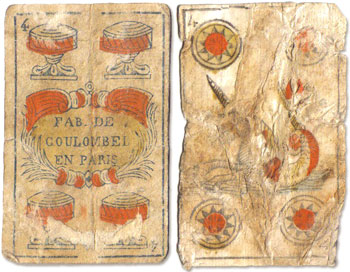
So-called because it is a version of the old Spanish National pattern which was manufactured by Parisian card makers in the 19th century for export to South America.
Right: two cards by 'Coulombel en Paris', with a sea horse monster depicted on the Four of Coins.
The ‘Parisian’ Spanish Pattern sometimes has female cavaliers, possibly influenced by French ‘Aluette’ packs. A dog is often seen tethered in the background of the Valet of Coins. The Ace of Batons is grasped by a hand. The Kings wear stockings which are revealed beneath their parted robes. In many examples a sea monster is depicted on the Four of Coins and the Four of Cups often mentions the word ‘Paris’.
The pattern has been used until recently in Uruguay. (click on images below to see more).
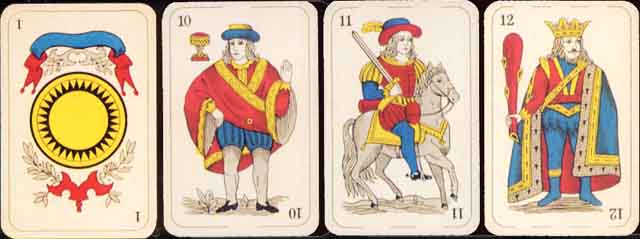 |
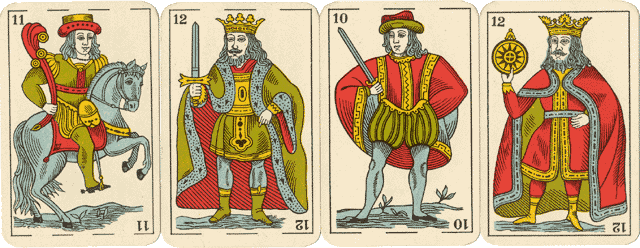 |
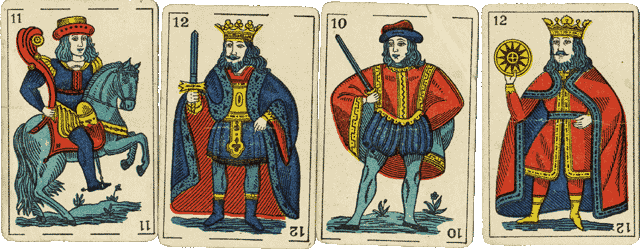 |
Top row: 4 cards from a Colombian pack. Middle row: 4 cards from Naipes Tatú, Montevideo (Uruguay), c.1950. Bottom row: 4 cards from Naipes Miguelito, Montevideo (Uruguay), c.1950 |

By Simon Wintle
Member since February 01, 1996
Founder and editor of the World of Playing Cards since 1996. He is a former committee member of the IPCS and was graphics editor of The Playing-Card journal for many years. He has lived at various times in Chile, England and Wales and is currently living in Extremadura, Spain. Simon's first limited edition pack of playing cards was a replica of a seventeenth century traditional English pack, which he produced from woodblocks and stencils.
Trending Articles
Popular articles from the past 28 days
Related Articles
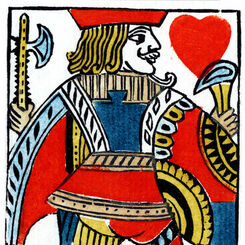
Woodblock and Stencil Jack of Hearts
A limited edition art print of the Jack of Hearts 1984 woodblock joker.
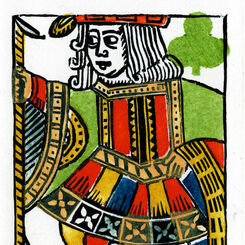
Woodblock and Stencil Jack of Clubs
A limited edition art print of the Jack of Clubs 1984 woodblock joker.
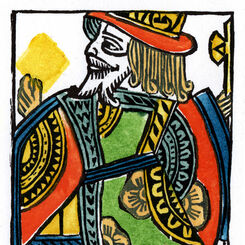
Woodblock and Stencil King of Diamonds
A limited edition art print of the King of Diamonds 1984 woodblock joker.
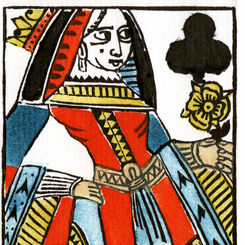
Woodblock and Stencil Queen of Clubs
A limited edition art print of the Queen of Clubs 1984 woodblock joker.
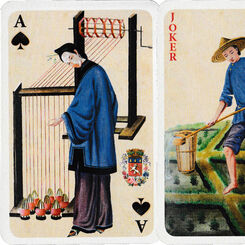
Les plaques émaillées d’Antoine Vollon
54 different enamel plaques depicting silk manufacture, by the Lyon artist Antoine Vollon.
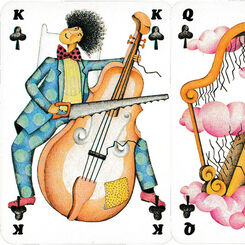
Le Jeu des Musiciens
Artist Silvia Maddonni’s gently humorous take on musicians and their instruments.
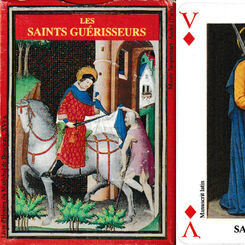
Les Saints Guérisseurs et Protecteurs
Healing and patron saints portrayed in paintings, manuscripts, altarpieces and statuary.
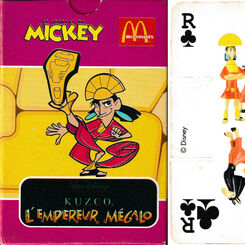
Kuzco, l’empereur mégalo
Notched cards featuring toys representing characters from the Disney film Kuzco, as offered by McDon...
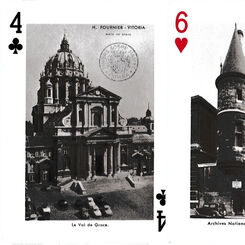
Monuments de Paris
‘Monuments de Paris’ souvenir playing cards produced by Heraclio Fournier, c.1964.
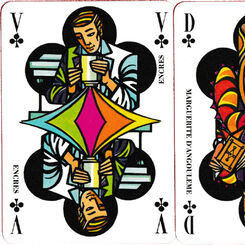
Lorilleux International
Promotional pack for Lorilleux International’s Lotus inks, with designs by James Hodges.

Les Tontons du Rock
Caricatures of rock and pop stars in black and white by Charles Da Costa.
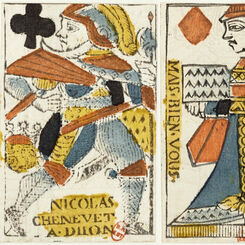
Burgundy pattern
The old Burgundy (or Burgundian) pattern by Nicolas Chenevet, Dijon.
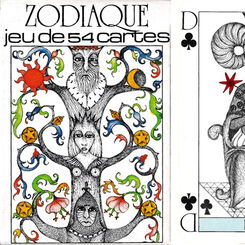
Zodiaque
“Les Signes du Zodiaque” playing cards designed by Youdi des Aubrys.
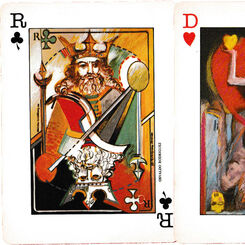
Peintres Latino Americains
Original artwork by 18 different Latin American artists.
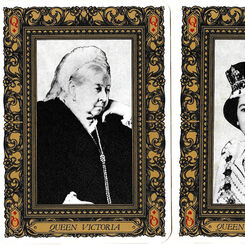
British Monarchs
Commemorating the royal wedding of Charles, Prince of Wales to Lady Diana Spencer on the 29th
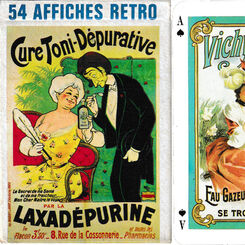
54 Affiches Retro
54 different old French advertising posters, mainly for travel and health products.
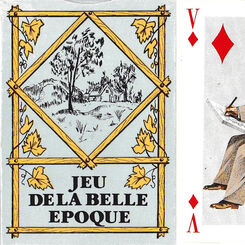
Jeu de la Belle Epoque
Jeu de la Belle Epoque, remembering a golden age of optimism, progress and elegance.
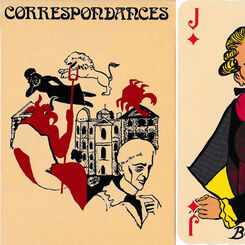
Correspondances
‘Correspondances’ depicting the 52 transfer stations of the Paris Métropolitain, France, 1985.
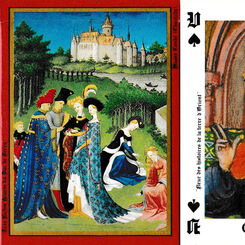
Jeu Gothique
‘Jeu Gothique’ illustrating the Gothic period in France, published by Editions Dusserre.
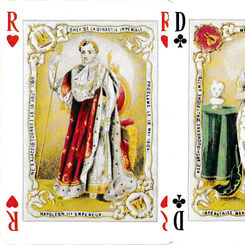
Jeu Bonaparte
Jeu Bonaparte depicting the extended family of Napoleon Bonaparte, France, 1978
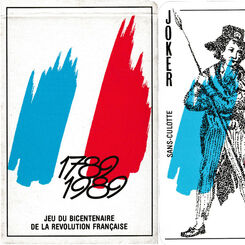
Jeu du Bicentenaire de la Révolution Française
Pack created by Yannick Pennanguer commemorating the bicentenary of the French Revolution and the ce...
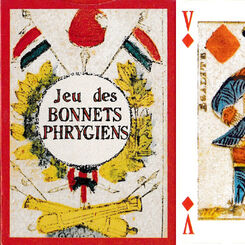
Jeu des Bonnets Phrygiens
Reproduction of Jeu des Bonnets Phrygiens relating to the Phrygian cap (or liberty cap), France, 198...
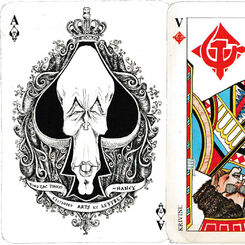
Jeu de la Vme
A political pack designed by Pino Zac and published in 1977 by Editions Arts et Lettres.
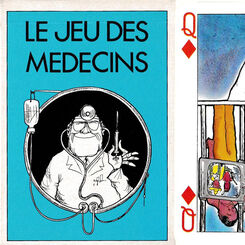
Jeu des Médecins
Cartoons of doctors and nurses by Pino Zac, published by B.P. Grimaud in 1983.
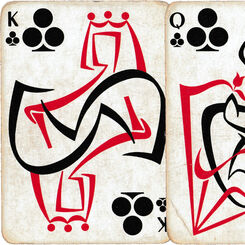
Jeu Boléro
Sweeping, semi-abstract designs by J.L. Jolin in red and black only.
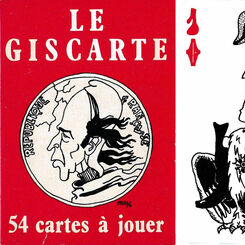
Le Giscarte
Le Giscarte political playing cards designed by Eddy Munerol, France, 1976.
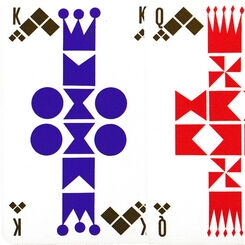
Knoll International
Geometric designs by the French artist Jean Garçon for Knoll International, the furniture company.
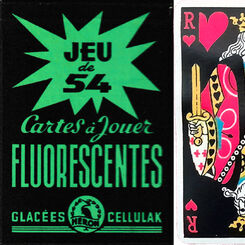
Cartes à Jouer Fluorescentes
Standard French cards but printed with fluorescent inks on a black background.
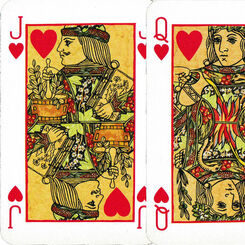
SEMP playing cards
Modified Anglo-American courts advertising a French medical publishing company.
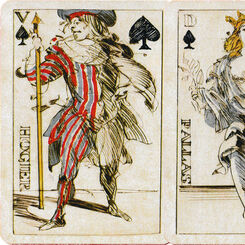
Claude Weisbuch
Free reinterpretation of the traditional Paris pattern courts by the artist Claude Weisbuch.
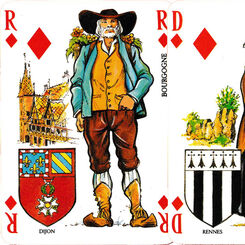
Hôtels-Grils Campanile
Publicity pack for the Campanile hotel and restaurant chain featuring French provincial costumes, wi...
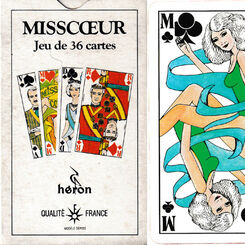
MISSCŒUR
Elongated cards from France with a fourth court card, a Miss.
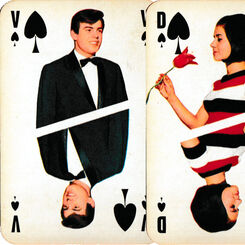
Jeu des Copains
French popular singing stars of the 1960s.
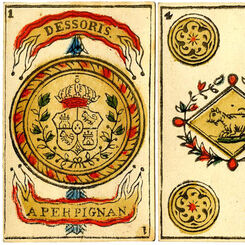
Dessoris
Spanish-suited cards by Dessoris, Perpignan, which anticipate the French Catalan pattern.
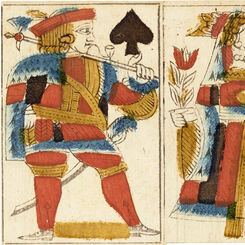
Lyon pattern by Michel Ressy
Lyon pattern by Michel Ressy, c.1760.
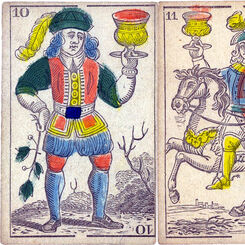
Spanish-suited deck by J.Y. Humphreys
A rare Spanish-suited deck published by J.Y. Humphreys, Philadelphia, c.1816.
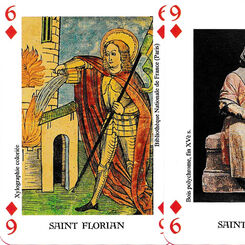
Les métiers et leurs protecteurs
“Les métiers et leurs protecteurs” playing cards published by Editions Dusserre, c. 1995.
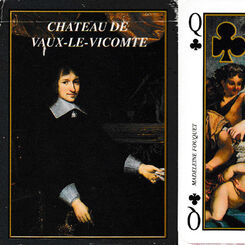
Château de Vaux-le-Vicomte
Famous people associated with Nicolas Fouquet’s splendid château of Vaux-le-Vicomte.
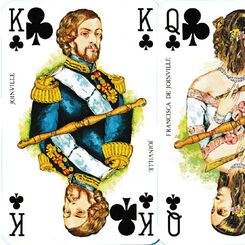
Compagnie Maritime des Chargeurs Réunis
French navigators and explorers on a promotional pack for the C.M.C.R shipping company.
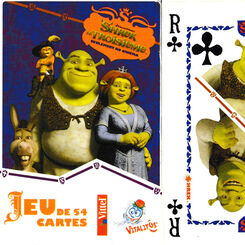
Shrek the Third playing cards
Characters from the 2007 film Shrek the Third, a DreamWorks Animation production.
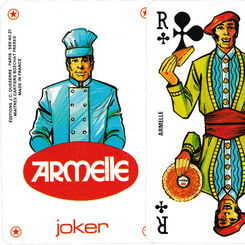
Jeu de cartes Armelle
Advertising pack designed by James Hodges for a company specialising in regional cakes and biscuits....
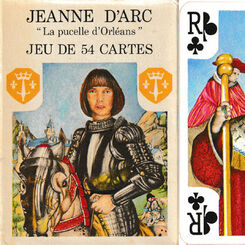
Jeanne d’Arc, “La pucelle d’Orléans”
Joan of Arc and her contemporaries in a colourful pack designed by Patrice Louis.
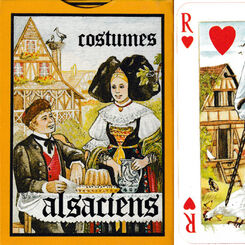
Costumes Alsaciens
Typical costumes and views of Alsace together with lists of the principal sights.
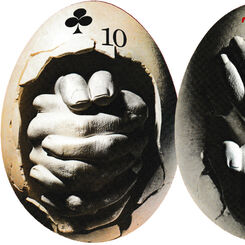
Les “Œufs de Cartes” de Krasno
Egg-shaped cards created by Rodolfo Krasno employing photographic images by Michel Leclerc.


